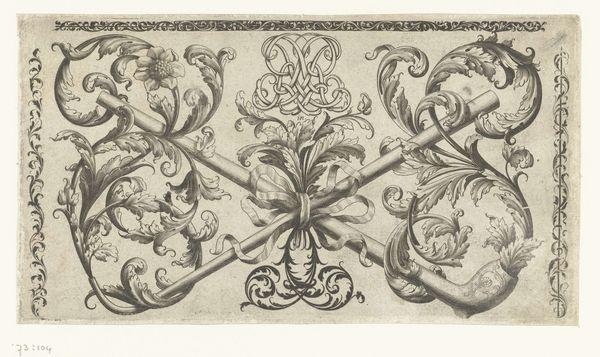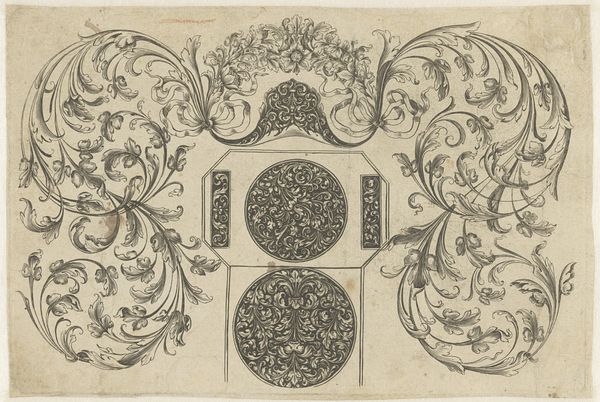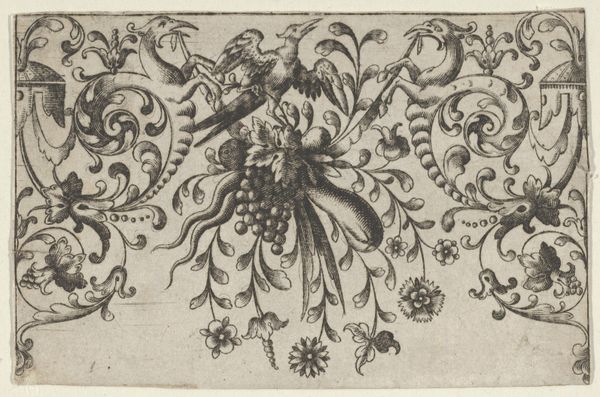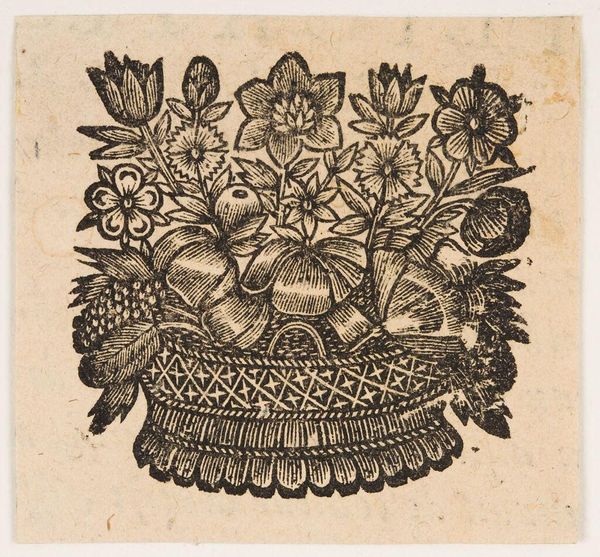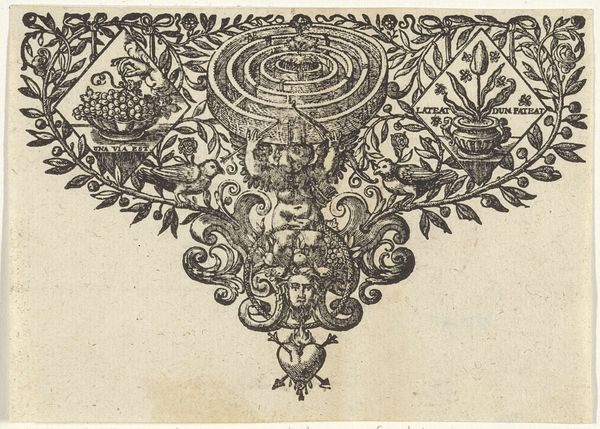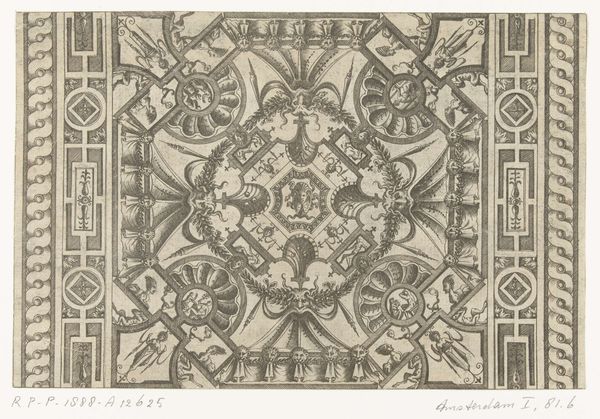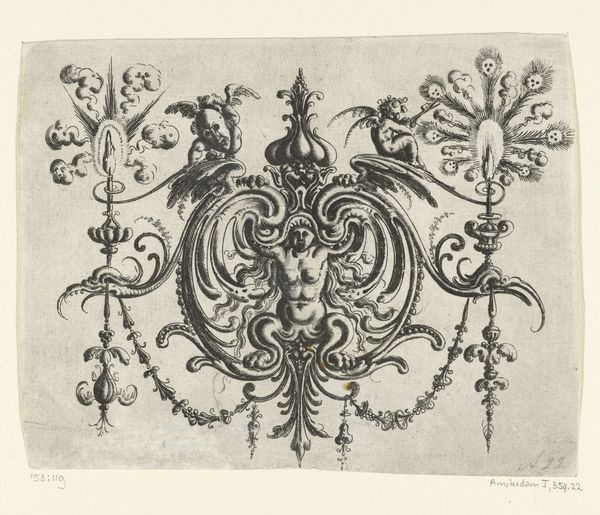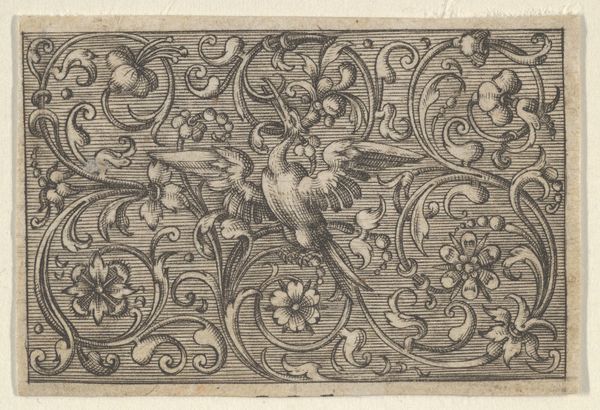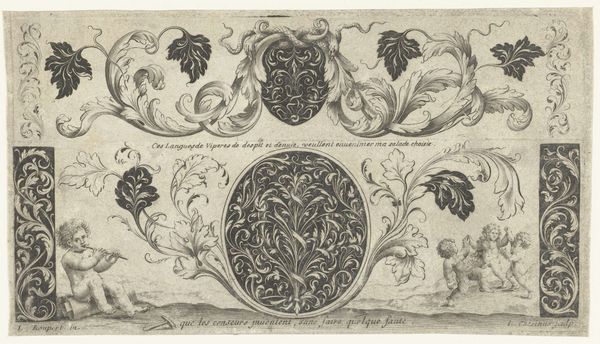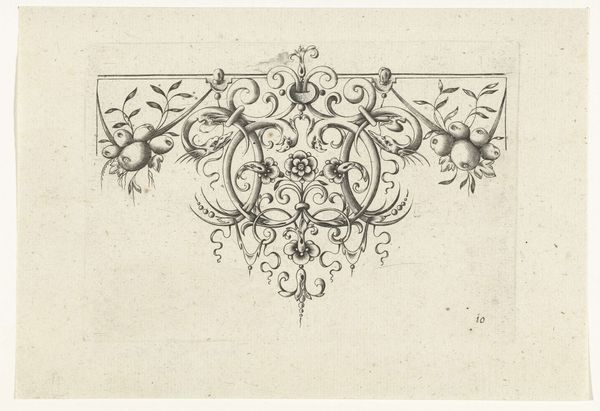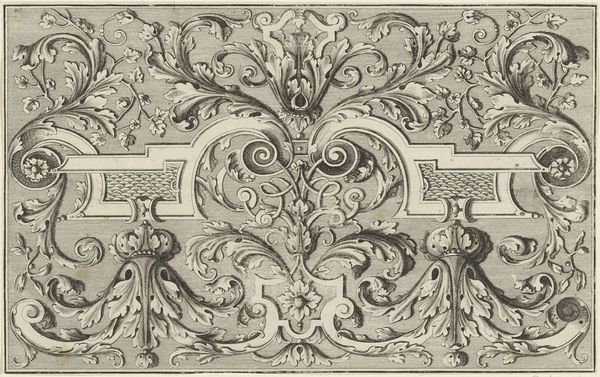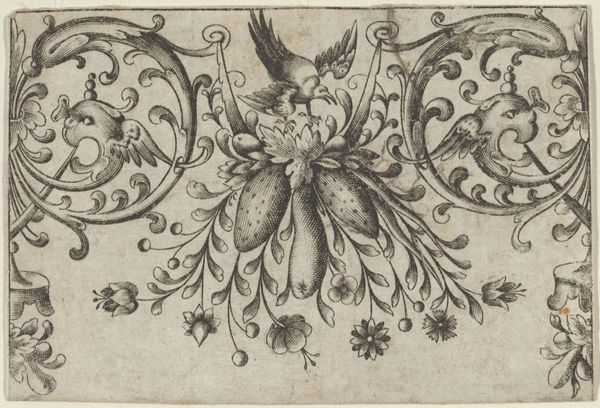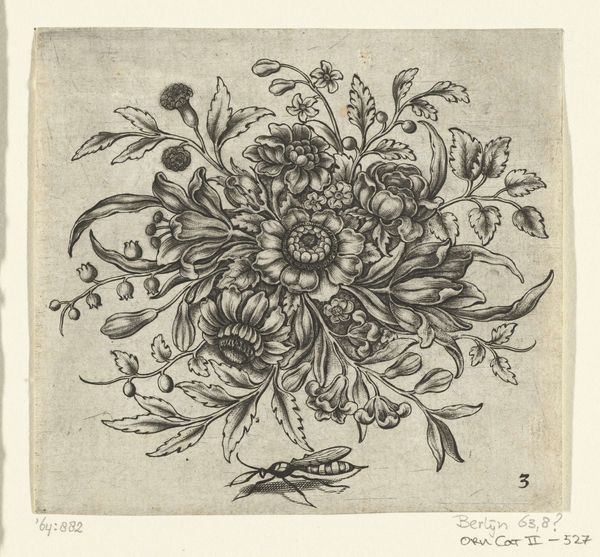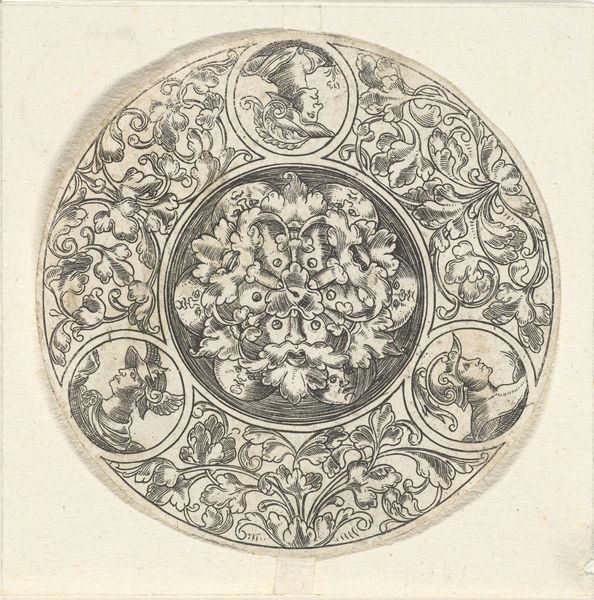
drawing, print, engraving
#
drawing
#
baroque
#
pen drawing
# print
#
pen illustration
#
pen sketch
#
old engraving style
#
ink line art
#
pen-ink sketch
#
line
#
pen work
#
coloring book page
#
engraving
#
doodle art
#
intricate and detailed
Dimensions: height 108 mm, width 121 mm
Copyright: Rijks Museum: Open Domain
Editor: So, here we have "Ovaal met bloemen in rechthoek," which translates to "Oval with flowers in rectangle," made before 1724 by Johann Conrad Reuttimann. It's a pen drawing, I think probably also used as a print, and what really strikes me is the intense detail, the labor involved in creating all those tiny lines and patterns. What do you see in this piece, considering the context it was made in? Curator: I’m drawn to the material implications of this work. Look at the sheer quantity of labor involved in such a detailed engraving. In pre-industrial Europe, consider the artisan class. Reuttimann would have had to painstakingly carve this design. Is this destined for mass production, blurring the lines between art and craft, or is it a one-off, signifying luxury for a wealthy patron? What statement might the accessibility of printmaking be making about art ownership in the 18th century? Editor: That’s a great point. Thinking about the material production changes the whole viewing experience. I hadn't thought of it as a statement about accessibility before. Curator: Exactly. The use of printmaking suggests a wider distribution than a unique painting. The act of replication cheapens the artistic value, in one sense, yet simultaneously spreads art to the masses. Who gets access to this imagery, and how does it reflect the consumer society developing at the time? The print would have been sold in larger quantities but was made of less-expensive paper. Editor: So, we are examining more than just the image itself. We’re looking at its means of production and distribution as critical parts of its meaning. I see how questioning the value of labor adds another dimension. Curator: Precisely! And this challenges our understanding of art, pushing us to think about labor, production, and consumption as central to the artistic statement. The material tells a story. Editor: I’ll definitely look at art differently now, thinking about its place in society through its production. Curator: Agreed, seeing art as material history enriches the whole experience.
Comments
No comments
Be the first to comment and join the conversation on the ultimate creative platform.
